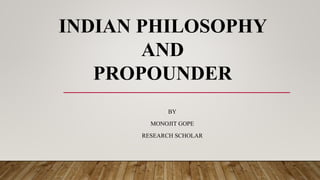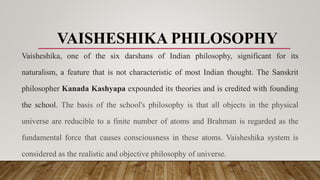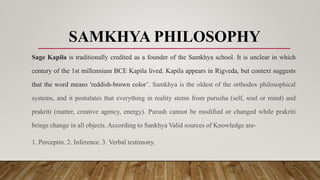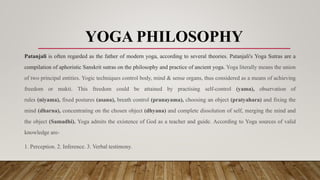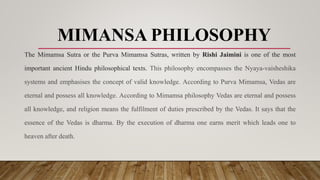The document discusses Indian philosophy, dividing it into two main categories: astika (orthodox) and nāstika (unorthodox) philosophies, based on their acceptance of the Vedas as a source of knowledge. It covers key philosophical systems such as Nyaya, Vaisheshika, Samkhya, Yoga, Mimamsa, and Vedanta within the astika tradition, as well as Charvaka, Jainism, and Buddhism within the nāstika tradition, highlighting their foundational beliefs and sources of valid knowledge. Each school offers diverse perspectives on reality, knowledge, and the nature of the self.
